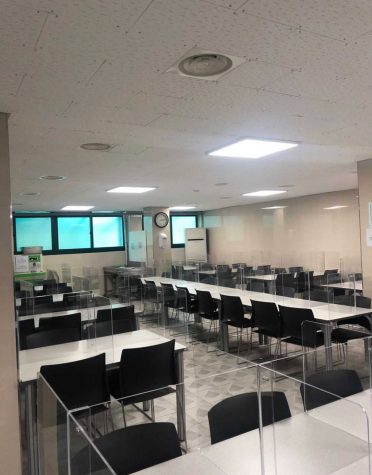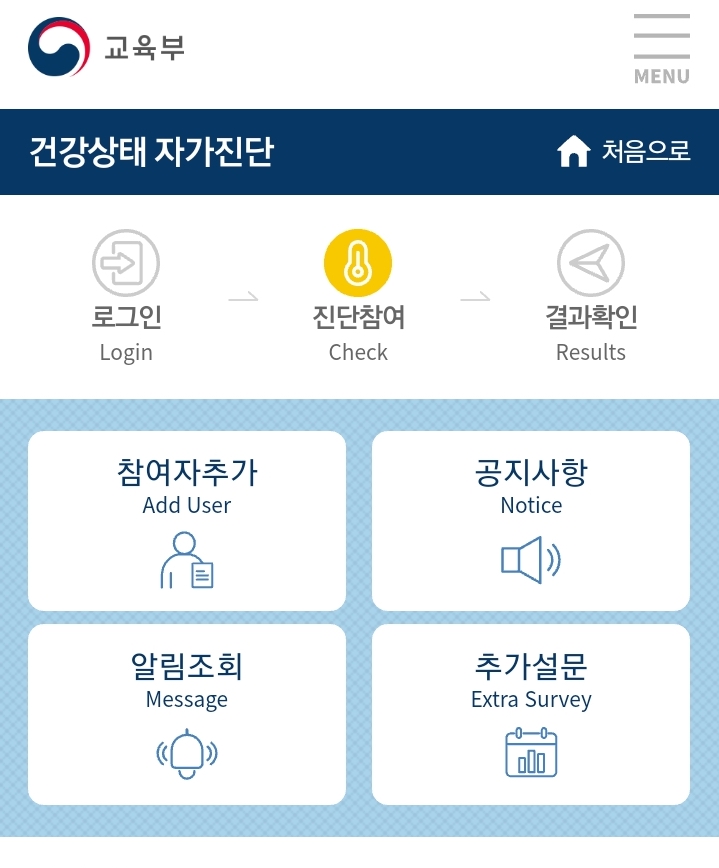High School Life in South Korea During the Coronavirus Pandemic
With the new semester starting this March 2021, schools in South Korea have opened with strict regulations, due to the ongoing Coronavirus pandemic.
South Korea now requires students and parents to record their symptoms every night through the “Health Condition Self-Check” application prior to entering the school.
A year after schools were closed in March 2020 due to COVID-19, New York City public high schools have reopened again for many students to pursue in-person learning, starting on March 22nd, 2021. Although around 55,000 students (20% of NYC’s high school enrollment) have resumed in-person learning, the majority of NYC high school students have chosen to remain home and to continue remote instruction through June 2021. Meanwhile, students on the other side of the world in South Korea have all returned to in-person learning of some sort under strict social distancing regulations.
With the greater Seoul area under Level 2 social distancing measures since February 2021 and other regions under Level 1.5, private gatherings of five or more people have been banned. Moreover, attendance limits have been set at schools, religious activities, and sporting events. With the new school year starting this March 2021, the maximum attendance limit is set at one-third for elementary and middle schools under Level 2, but it can be relaxed to two-thirds depending on the situation regarding the Coronavirus pandemic.
After parents demanded that certain grades be allowed to attend in-person school, first and second graders were told to attend school every day given the importance of regular in-person schooling for this age group. Furthermore, twelfth graders were also told to attend school every day in order for their college process to go smoothly. Most of the other grades attend physical school only once a week or a maximum of three times a week, in order to ensure that social distancing guidelines are met.
Moreover, students may have to alternate their learning style because of the weekly switch between physical and virtual learning. For virtual learning, students in Korea utilize Zoom for live instruction, then refer to websites such as Wedorang and EBS for any pre-recorded videos, in order to complete their assignments.
One of the biggest changes is the “Health Condition Self-Check” application installed on students’ phones. For students to enter school, they must complete a checklist on the app with their parent(s) every night. If incomplete, they are unable to enter the building and will then receive a check-up phone call.
On this app, they ask for the person’s current temperature and if they are experiencing any COVID-19 symptoms. If the application determines that their health conditions are questionable, they are given an extra set of questions and calls. Additionally, every morning, all students have their temperatures checked at the entrance of the school and have their hands sanitized.
Students sanitize their hands not only at the entrance of the school building, but constantly throughout the day, as multiple hand sanitizers are placed in every classroom and hallway. Moreover, students are required to sanitize their hands once again when entering the cafeteria. Clear dividers are also placed on every table, and everyone must sit one seat away from each other, in order to satisfy the social distancing regulations.

Yoojin, a current junior in an art high school located at Daejeon, South Korea, said, “This is the saddest change implemented because the hour-long lunch period was our only leisure time during our approximately eleven-hour school day, and also the only chance for us to talk to our friends, which is now strictly prohibited.”
Clear dividers can once again be found in every class on every desk. “I feel claustrophobic because we have to wear our masks the whole time and [are] also trapped in our dividers for more than half the day, even during physical education,” said Brian Kim, a high school senior in Seoul, South Korea.
To further ensure safety, air purifiers, which remove contaminants from the air in order to improve indoor air quality, are activated 24/7 even after the schools close for the evening. The schools are also professionally disinfected every day after classes end for the day. Every public water fountain is also unavailable, as they are taped up with a “warning” sign.
In South Korea, all high schoolers pay to attend school, and as a result, most students have come to a consensus that their money is going to waste since they are not gaining the high school experience they wished and paid for. “I am upset how our senior trip and club activities after school are canceled,” said Sangwoo Park, another high school senior in Seoul, South Korea.
Nevertheless, despite being almost 7,000 miles apart, one consensus that is evident between high schoolers in both America and South Korea is that we all wish for the day when everyone can meet each other maskless, once again.
“I feel claustrophobic because we have to wear our masks the whole time and [are] also trapped in our dividers for more than half the day, even during physical education,” said Brian Kim, a high school senior in Seoul, South Korea.
Darlene Park is an Arts and Entertainment Editor for ‘The Science Survey.’ As an Arts and Entertainment Editor, she edits articles covering various...

